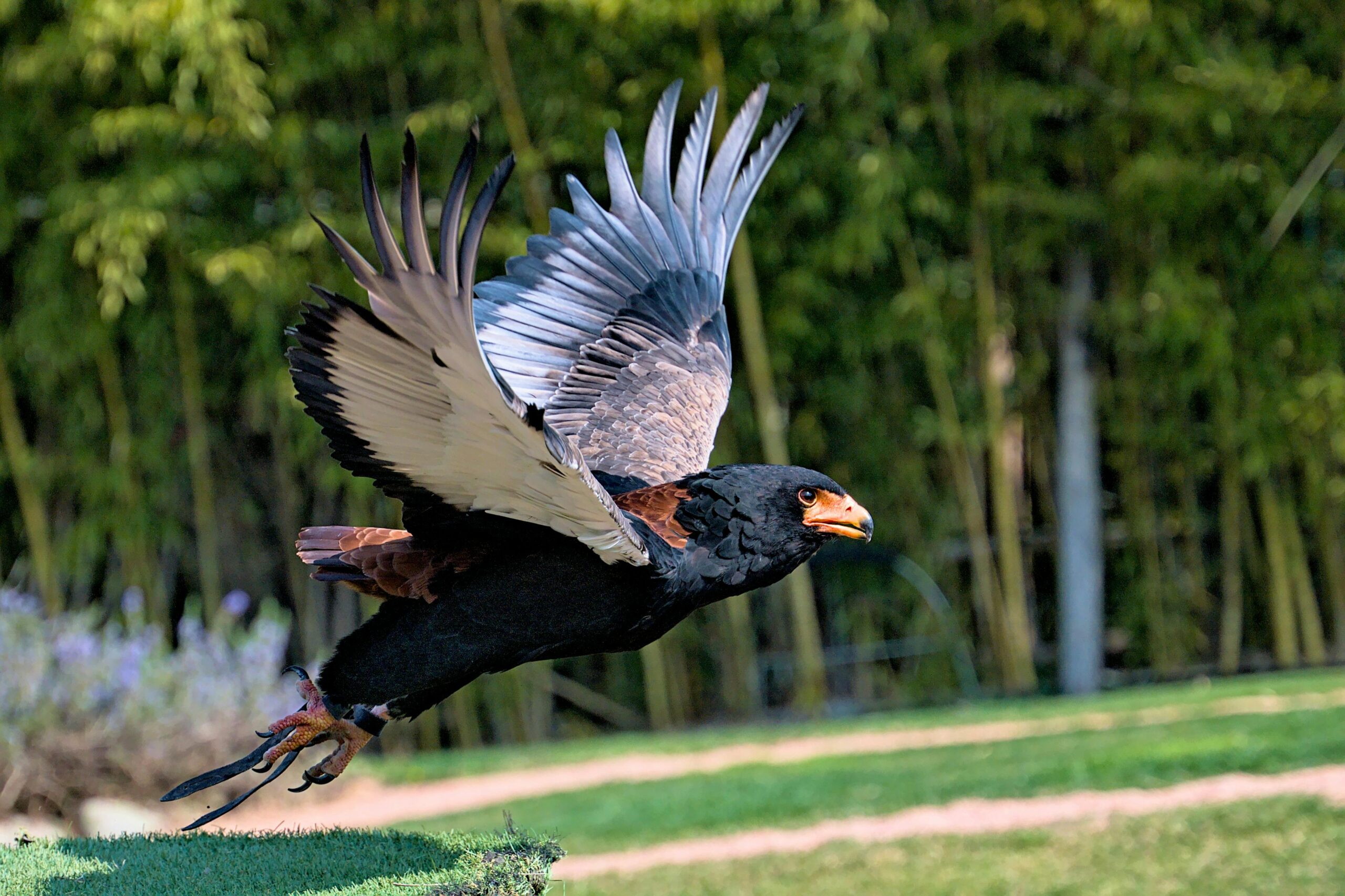Bateleur eagles are unique and colorful birds of prey that are native to broad areas of Sub-Saharan Africa. While they are found in arid areas, they are not typically associated with true desert environments. Let’s explore the habitat preferences and distribution of these fascinating raptors.
Habitat and Distribution of Bateleur Eagles
Bateleur eagles are birds of the open savanna country and woodland. They are commonly found in closed-canopy savannah woodland habitats, including Acacia savannah, Mopane, and miombo woodlands. These birds are very common in broad-leaved woodland in the Okavango Delta and are often found over tall woodland near drainage lines and ephemeral rivers in north-eastern Namibia and within the more arid Etosha National Park.
However, it’s important to note that Bateleurs are not found in areas of dense forest and are absent from the northern deserts of the continent. They prefer habitats with a mix of open areas and scattered trees or woodlands, which provide them with the necessary resources and nesting sites.
Adaptations to Arid Environments
While Bateleur eagles are not found in true desert environments, they are well-adapted to survive in arid regions. Here are some of the key adaptations that allow them to thrive in these drier areas:
-
Efficient Water Conservation: Bateleur eagles have evolved efficient mechanisms to conserve water, such as the ability to produce highly concentrated urine and minimize water loss through their skin and respiratory system.
-
Scavenging Behavior: As opportunistic carnivores and scavengers, Bateleur eagles are able to take advantage of a variety of food sources, including small mammals, birds, reptiles, and even carrion. This adaptability allows them to survive in areas with limited prey availability.
-
Thermal Regulation: Bateleur eagles have a unique ability to regulate their body temperature through their large, broad wings and the ability to adjust their body posture and orientation to the sun. This helps them cope with the high temperatures and intense solar radiation found in arid environments.
-
Nesting Adaptations: Bateleur eagles build their nests in tall trees or on rocky outcrops, which provide them with shade and protection from the harsh desert conditions. This helps to ensure the survival of their eggs and chicks.
Threats and Conservation Status
Despite their adaptations to arid environments, Bateleur eagles are facing various threats that have led to a decline in their overall population. Some of the key threats include:
-
Habitat Loss and Degradation: The conversion of their natural habitats for agriculture, urbanization, and other human activities has resulted in the loss and fragmentation of Bateleur eagle habitats.
-
Poisoning and Persecution: Bateleur eagles are sometimes targeted by farmers and ranchers who view them as a threat to their livestock or crops. They may also be unintentionally poisoned by the use of pesticides and other chemicals.
-
Illegal Hunting and Trade: Bateleur eagles are sometimes hunted for their feathers, which are used in traditional ceremonies and rituals. This illegal trade has contributed to the decline of their populations.
The Bateleur eagle is currently listed as Least Concern on the IUCN Red List of Threatened Species, with a population estimate of 10,000 to 100,000 individuals. However, their populations are declining, and conservation efforts are crucial to ensure the long-term survival of these magnificent birds.
Conclusion
In summary, while Bateleur eagles are not found in true desert environments, they are well-adapted to survive in arid regions of Sub-Saharan Africa. These unique birds of prey are found in open savanna and woodland habitats, where they thrive on a diverse diet and utilize their impressive adaptations to cope with the challenges of their environment. However, their populations are facing various threats, and conservation efforts are necessary to protect these remarkable raptors.


